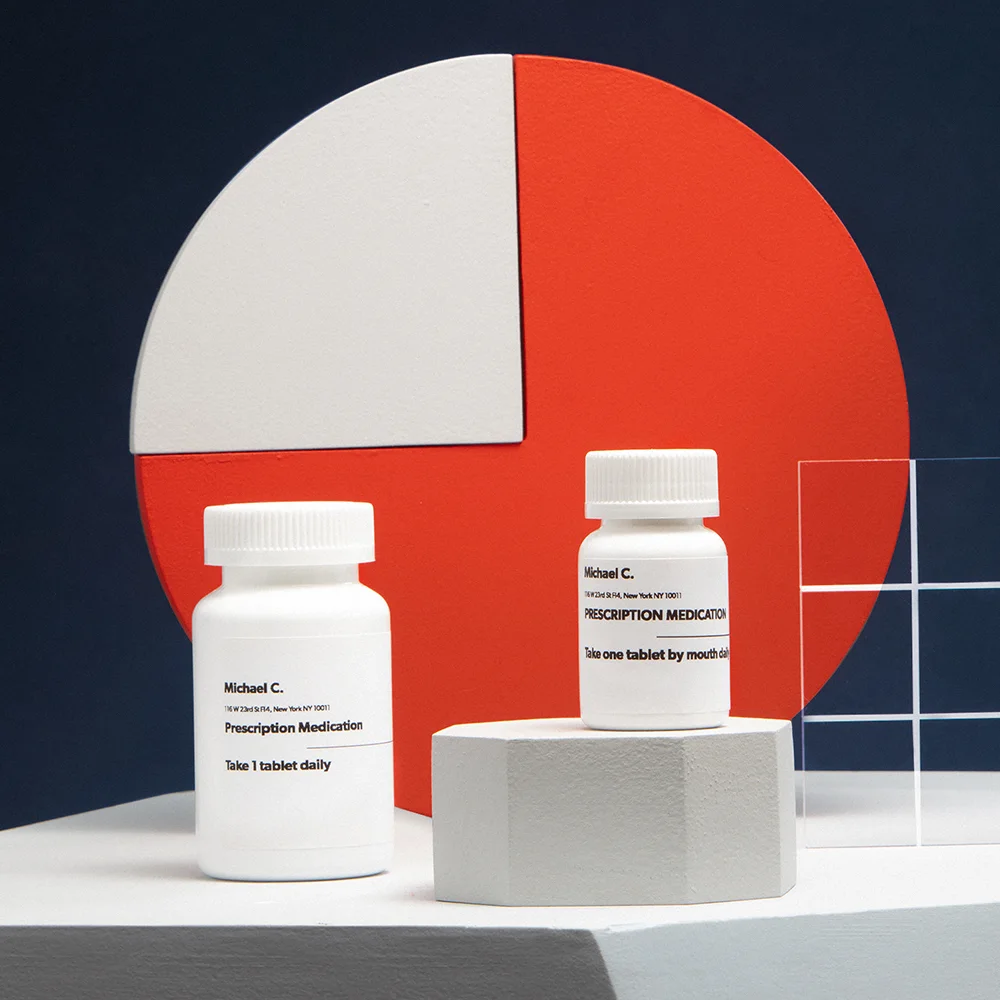Here's what we'll cover
Here's what we'll cover
Here's what we'll cover
If you’re one of the millions of Americans that have oral herpes, you know that it can be an annoying, painful problem to have. Oral herpes, also called herpes labialis, is a viral infection that causes small, painful blisters around the mouth and on the lips during an outbreak. These blisters—commonly called cold sores or fever blisters—are caused by herpes simplex virus type 1 (HSV-1). Of note, canker sores, the small, shallow, red, or white ulcers found inside the mouth and on the gums are not related to oral herpes. If you do get oral herpes, there’s, unfortunately, no cure, although it can be treated with antiviral medications.
Viruses in the herpes virus family cause both oral herpes and genital herpes. HSV-1 primarily causes oral herpes, and HSV-2 primarily causes genital herpes. However, there is some crossover—some cases of genital herpes are caused by HSV-1 when the virus is spread through oral sex. Even though the two viruses are closely related, having an HSV-1 infection hasn’t been shown to prevent an HSV-2 infection, but it may prevent the symptoms (Langenberg, 1999). So to answer the question, no, oral herpes is not a misnomer, but it usually isn’t caused by the same virus that causes genital herpes.
How common is oral herpes?
HSV-1, the virus that causes oral herpes, is ubiquitous. Worldwide, it’s estimated that 3.7 billion people are infected with HSV-1 (Looker, 2015). It’s most prevalent in low- and middle-income areas of the world, but it remains widespread in the United States, affecting nearly half the population (Xu, 2006). Many people are infected with HSV-1 as children, with rates of HSV-1 going over 25% by age 7 (Xu, 2007). Family members are a common source of transmission in children, but children can often spread it to one another, especially in daycare settings. The good news is that the HSV-1 infections are declining in the US, going from 62% in 1988 to 1994 to 47.5% in 2015 to 2016 (McQuillan, 2018).
What are the symptoms of oral herpes?
First of all, even if you are infected with HSV-1, it may not mean you’ll have any symptoms. Studies have shown that only about 1 in 4 people previously infected with HSV-1 have ever had symptoms (Oliver, 1995). Keep in mind that even if you’ve never had any signs of oral herpes, you can still spread it to others. If you do experience symptoms of oral herpes, they typically include small, fluid-filled blisters in and around the mouth. Your symptoms during the primary (or first) infection are usually worse than any recurrent episodes you might have in the future. You might also experience fever, body aches, sore throat, swollen lymph nodes, or headache. In children, these symptoms may be bad enough to require hospitalization for dehydration or pain control. This can last up to 2 weeks before going away.
After your symptoms go away the first time, the virus goes into a latent, or dormant, state in a bundle of nerve cells called the trigeminal ganglion. In 20-40% of those infected with HSV-1, the virus will come out of these cells again and reactivate (Spruance, 1977). When it does, it’s called a recurrent infection and will cause cold sores, the classic small blisters around the mouth and lips. Because your immune system has already seen the virus before, the severe, systemic symptoms that appeared during the primary infection are usually not present. About a day before the sores appear, you might experience pain, burning, tingling, and itching around your mouth and lips. This is called a prodrome and is a great time to take antiviral medication to reduce or stop the symptoms of an outbreak. The cold sores will heal after five to eight days and go away until the next outbreak.
How is oral herpes transmitted, and what are the risk factors for acquiring oral herpes?
HSV-1 is transmitted from person to person via direct contact with herpes sores, skin contact, oral contact, or contact with infected saliva. It’s common to spread HSV-1 through kissing, sharing utensils, glasses, cups, water bottles, towels, lip balm, or razors, or through oral sex. Even if you don’t have any symptoms of oral herpes, you can still infect others with HSV-1. However, you’re more likely to spread HSV-1 when you do have symptoms because it’s the period where your viral levels are at the highest.
There are some groups of people that are especially at high risk of getting HSV-1. Athletes that play contact sports, especially wrestlers, are at high risk because their saliva frequently comes into contact with broken skin. In 2007, there was a large outbreak in Minnesota after a high school wrestling tournament resulted in 54 athletes with symptomatic infections within a month (Anderson, 2008). It’s so commonly seen in wrestlers that some researchers have called it ‘herpes gladiatorum.’ Other groups at high risk include babies—HSV-1 is transmitted from the maternal genital tract during delivery—and sexually active adolescents, who are at increased risk for both genital and oral herpes.
What can bring on an oral herpes outbreak?
Though reactivation of oral herpes is not wholly understood, fever, menstruation, sunlight, upper respiratory infections, stress, and poor immune function have all been linked to oral herpes recurrences (Opstelten, 2008). Trauma to the previously infected area, such as dental work or surgery, can also be a trigger for recurrence (Young, 1976).
How is oral herpes treated? Can you get rid of it?
Oral herpes is a lifelong infection (there is no cure), but there are treatment options available to mitigate and prevent symptoms. First of all, there are three approved oral antiviral medicines for episodic treatment of an oral herpes outbreak—acyclovir, famciclovir, and valacyclovir (brand name Valtrex). Acyclovir has to be taken more frequently than the other two medications but is typically cheaper. Antivirals should be started at the first sign of an outbreak. Some health care providers prescribe these same medications on an ongoing basis for prevention of outbreaks in patients with recurrent episodes. There are also topical treatments available for episodic outbreaks—docosanol, penciclovir, and acyclovir.
Additionally, some people rely on over-the-counter medications to control pain and manage their symptoms. Sucking on ice or drinking cold beverages can also dull the pain. However, only antiviral drugs have been proven to shorten or prevent oral herpes outbreaks.
Valacyclovir Important Safety Information: Read more about serious warnings and safety info.
DISCLAIMER
If you have any medical questions or concerns, please talk to your healthcare provider. The articles on Health Guide are underpinned by peer-reviewed research and information drawn from medical societies and governmental agencies. However, they are not a substitute for professional medical advice, diagnosis, or treatment.
References
Anderson, B. J. (2008). Managing Herpes Gladiatorum Outbreaks in Competitive Wrestling. Current Sports Medicine Reports , 7 (6), 323–327. doi: 10.1249/jsr.0b013e31818eebde. Retrieved from https://www.ncbi.nlm.nih.gov/pubmed/19005353
Langenberg, A. G., Corey, L., Ashley, R. L., Leong, W. P., & Straus, S. E. (1999). A Prospective Study of New Infections with Herpes Simplex Virus Type 1 and Type 2. Chiron HSV Vaccine Study Group. New England Journal of Medicine , 341 (19), 1432–1438. doi: 10.1056/nejm199911043411904. Retrieved from https://www.ncbi.nlm.nih.gov/pubmed/10547406
Looker, K. J., Magaret, A. S., May, M. T., Turner, K. M. E., Vickerman, P., Gottlieb, S. L., et al. (2015). Global and Regional Estimates of Prevalent and Incident Herpes Simplex Virus Type 1 Infections in 2012. PLOS One , 10 (10). doi: 10.1371/journal.pone.0140765. Retrieved from https://www.ncbi.nlm.nih.gov/pubmed/26510007
McQuillan, G., Kruszon-Moran, D., Flagg, E. W., & Paulose-Ram, R. (2018). Prevalence of Herpes Simplex Virus Type 1 and Type 2 in Persons Aged 14-49: United States, 2015-2016. NCHS Data Briefs , (308), 1–8. Retrieved from https://www.ncbi.nlm.nih.gov/pubmed?term=29442994
Oliver, L., Wald, A., Kim, M., Zeh, J., Selke, S., Ashley, R., et al. (1995). Seroprevalence of herpes simplex virus infections in a family medicine clinic. Archives of Family Medicine , 4 (3), 228–232. doi: 10.1001/archfami.4.3.228. Retrieved from https://europepmc.org/article/med/7881604
Opstelten, W., Neven, A. K., & Eekhof, J. (2008). Treatment and prevention of herpes labialis. Canadian Family Physician , 54 (12), 1683–1687. Retrieved from https://www.ncbi.nlm.nih.gov/pmc/articles/PMC2602638/#
Spruance, S. L., Overall, J. C., Kern, E. R., Krueger, G. G., Pliam, V., & Miller, W. (1977). The Natural History of Recurrent Herpes Simplex Labialis. New England Journal of Medicine , 297 (2), 69–75. doi: 10.1056/nejm197707142970201. Retrieved from https://www.ncbi.nlm.nih.gov/pmc/articles/PMC2602638/#
Xu, F., Sternberg, M. R., Kottiri, B. J., Mcquillan, G. M., Lee, F. K., Nahmias, et al. (2006). Trends in Herpes Simplex Virus Type 1 and Type 2 Seroprevalence in the United States. JAMA , 296 (8), 964–973. doi: 10.1001/jama.296.8.964. Retrieved from https://www.ncbi.nlm.nih.gov/pubmed/16926356
Xu, F., Lee, F. K., Morrow, R. A., Sternberg, M. R., Luther, K. E., Dubin, G., et al. (2007). Seroprevalence of Herpes Simplex Virus Type 1 in Children in the United States. The Journal of Pediatrics , 151 (4), 374–377. doi: 10.1016/j.jpeds.2007.04.065. Retrieved from https://www.ncbi.nlm.nih.gov/pubmed/17889072
Young, S. K., Rowe, N. H., & Buchanan, R. A. (1976). A clinical study for the control of facial mucocutaneous herpes virus infections. I. Characterization of natural history in a professional school population. Oral Surgery, Oral Medicine, Oral Pathology , 41 (4), 498–507. doi: 10.1016/0030-4220(76)90277-2. Retrieved from https://www.ncbi.nlm.nih.gov/pubmed/1063349










